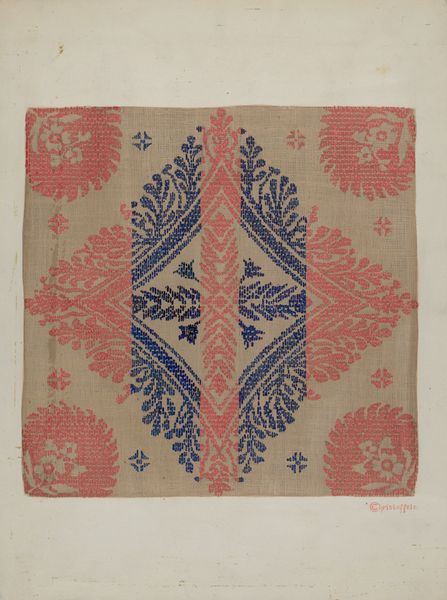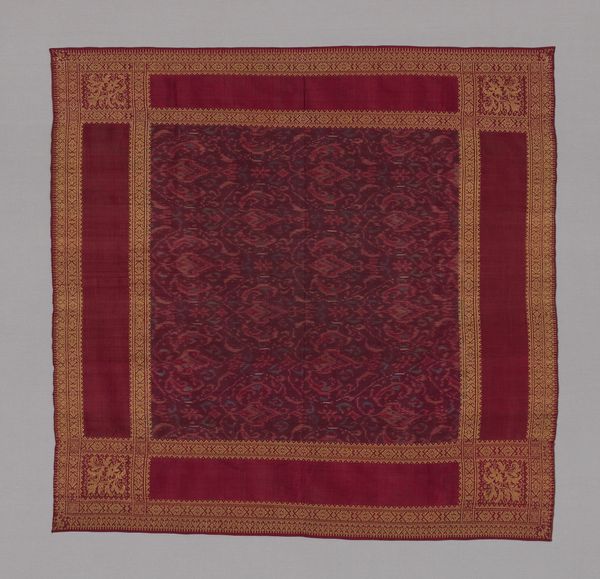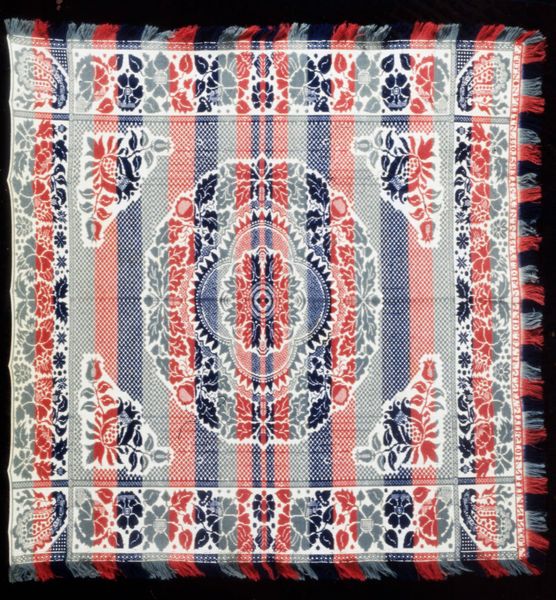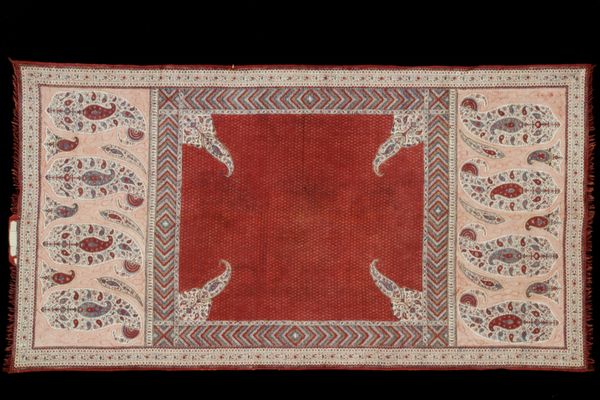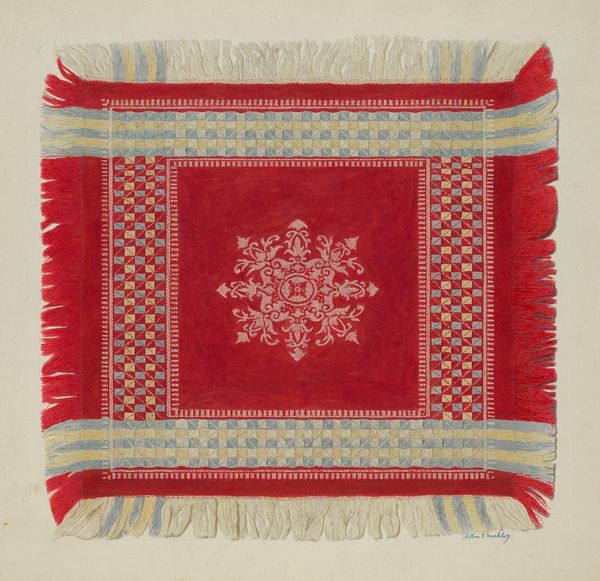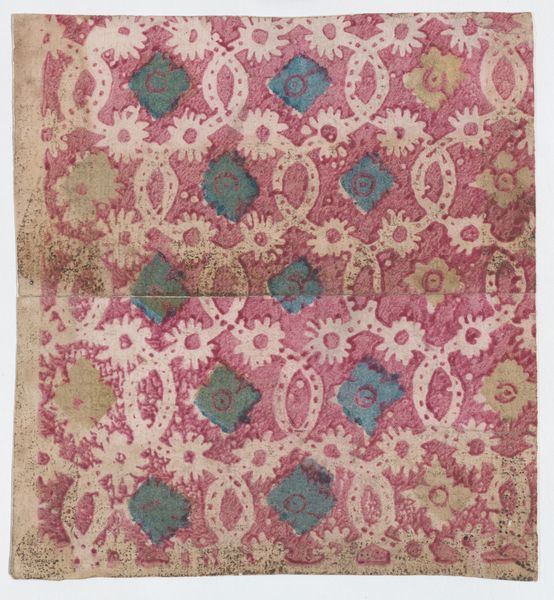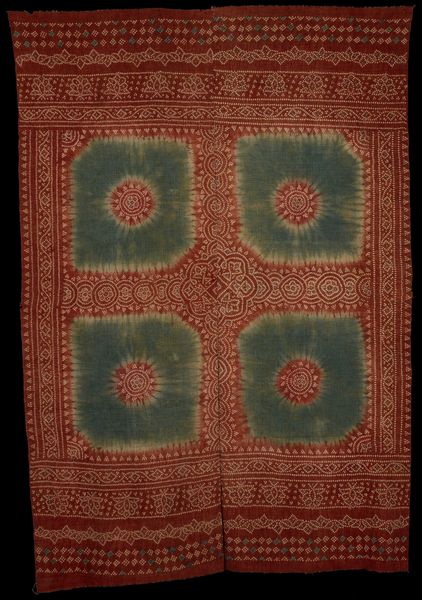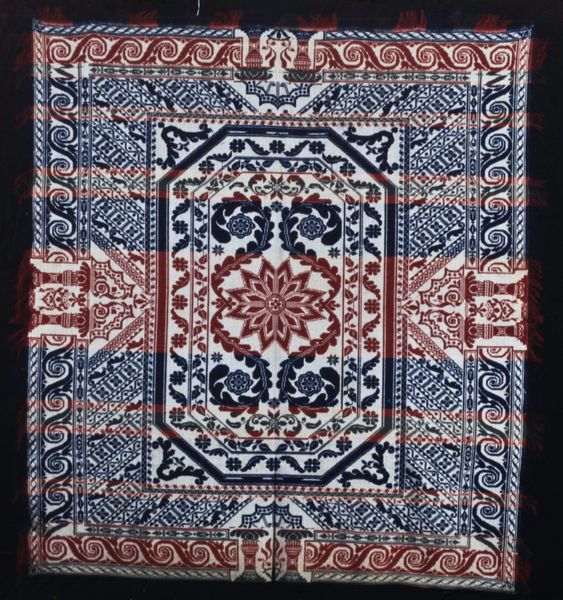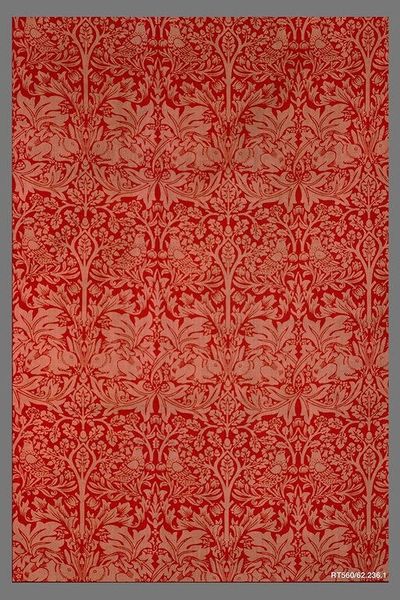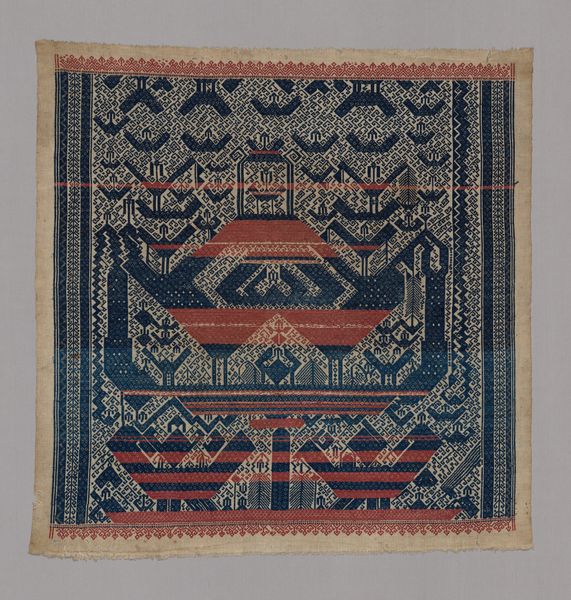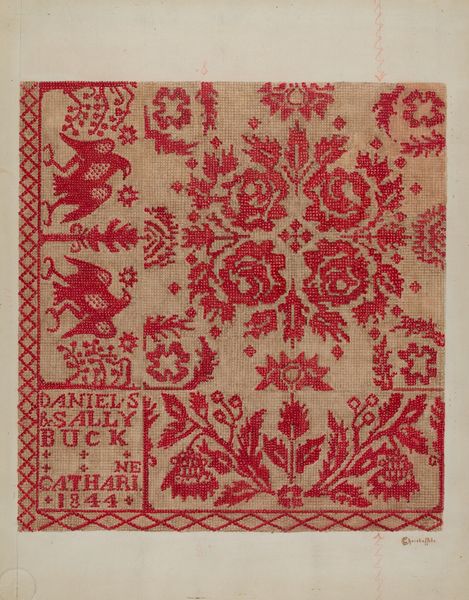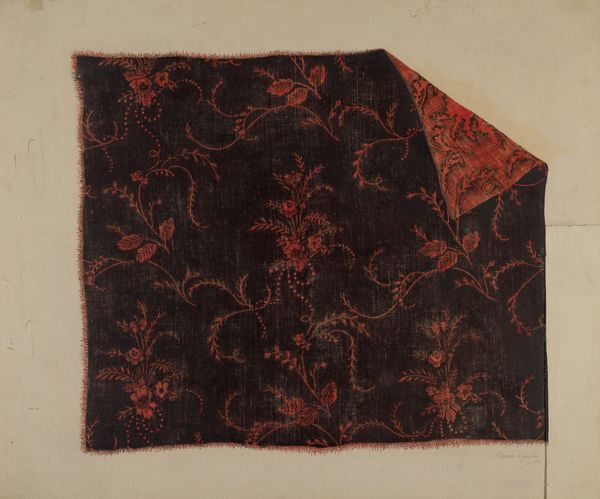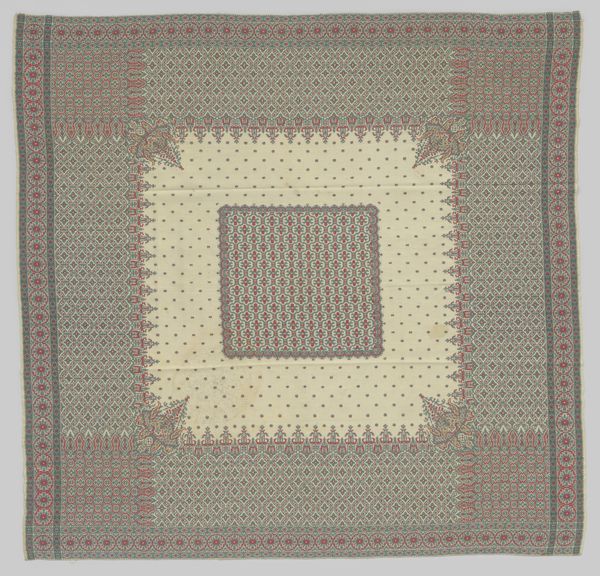
mixed-media, fibre-art, textile
#
natural stone pattern
#
mixed-media
#
fibre-art
#
naturalistic pattern
#
bird
#
textile
#
flower
#
fashion and textile design
#
pattern design
#
fabric design
#
romanticism
#
repetition of pattern
#
united-states
#
pattern repetition
#
textile design
#
decorative-art
#
imprinted textile
#
layered pattern
Dimensions: 53 x 58 in. (134.6 x 147.3 cm)
Copyright: Public Domain
Curator: This object is a jacquard-woven Tablecover, made around 1846 by J. Cunningham in the United States. It resides here at the Metropolitan Museum of Art. Editor: It's strikingly repetitive. Almost hypnotic with its swirling floral and avian motifs in contrasting shades of red. It feels very formal, befitting the title "Tablecover." Curator: Exactly, and the Jacquard loom, which enabled this intricate pattern, was relatively new technology at the time. It signifies a shift in textile production, making such detailed designs more accessible. Think about the labor implications: the move from hand-woven complexities to machine-assisted craft. Editor: The design feels overtly patriotic too, doesn't it? Note the prominent display of American eagles integrated amongst the stylized botanical patterns, the name "Washington" prominently displayed. These visual declarations solidify the work as an article celebrating the project of American nationhood. What context can we place the rise of jacquard weaving within early industrial American society? Curator: It speaks to industrial progress. Jacquard looms streamlined complex weaving processes. Materially, this likely indicates a rise in cotton cultivation, which fuelled both textile mills and… less palatable forms of production reliant on enslaved labour. Editor: It does demand we consider the source of materials and the broader socio-political environment. The imagery also plays a role: table coverings are often symbols of domesticity and hospitality, key ideological values. How does such mass-produced work alter understandings of “home” during the industrializing 19th century? Curator: Well, such works offered readily made decorative wares. Rather than home spun crafts requiring skill and hours, these industrially created fabrics could have served a demand, while offering less individual personalization than crafted items. Editor: I hadn't considered it in such a way, that it represented standardization even at a household level. An article seemingly for domestic life speaking to something larger: technology, social issues, and political ideas. Curator: Precisely. It prompts one to wonder about its life "in situ". Would its placement on the table subtly have promoted a particular narrative or sense of identity, in an ever modernizing America? Editor: Indeed, art’s true value lies in understanding the contexts of its creation. It provides more profound social commentary if considered against history's tides.
Comments
No comments
Be the first to comment and join the conversation on the ultimate creative platform.
